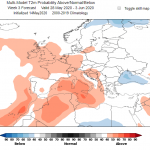WEMC Member Blog: Weather insurance for farmers: what is it and when to buy?
The World Energy & Meteorology Council (WEMC) has members across the globe, from a variety of backgrounds and expertise, doing work on a range of important issues to strengthen energy and meteorology education, research and collaboration. We welcome posts from our members communicating the fantastic work that they do. We are delighted to share with you this opinion piece written by Elena Maksimovich, a WEMC member from Weather Trade Net LLC. If you are interested in becoming a WEMC member (it’s free!), find out more by clicking here.

WEMC member Elena Maksimovich
Published: 27th May 2020
Weather insurance for farmers: what is it and when to buy?
Elena Maksimovich (Data Analyst & Marine Scientist at Weather Trade Net LLC). Edited by Kit Rackley.
Introduction
The ability to successfully resist, absorb and recover from weather shocks requires step-wise efforts and investments. Best efficiency is achieved with a combination of the risk exposure evaluation, prevention measures, emergency alert and insurance compensation when crisis occurs. Hurricanes in the Caribbean Sea, forest fires in California, flood in India devastate farmers. Major national initiatives are required to improve the resilience of the agricultural sector facing severe weather. Some countries do better than others. In this work, we overview the question of weather insurance for farmers.
Over the last decade weather insurance became very popular. The availability of high-quality fine and frequent weather data with a long historical record created a new business opportunity for insurance companies. No companies are cited here, but we only discuss the content of some policies and their use. The primary focus here is on food producers and the agricultural supply chain. Similar weather-based insurance policies exist already for many other weather-sensitive industries such as the wind and solar power providers, air and maritime transport.
Definition of weather risk
Risk is always associated with an injured person (farm, business or infrastructure), an exceptional event (squall, brief intense hail, local flood) and a loss. Risks are quantified in terms of the cost, the severity of the impact, the duration of the impact and the frequency of an adverse event.
As an American science fiction author Robert Heinlein once said, “climate is what you expect, weather is what you get”. It means that local weather fluctuates around some expected normal state which is the regional climate. For a very simple example: according to the UK Met Office, the annual rainfall in England in 2011 was 20-40% less compared to a 30-year climatology and just the year after there was 20-40% more than average.
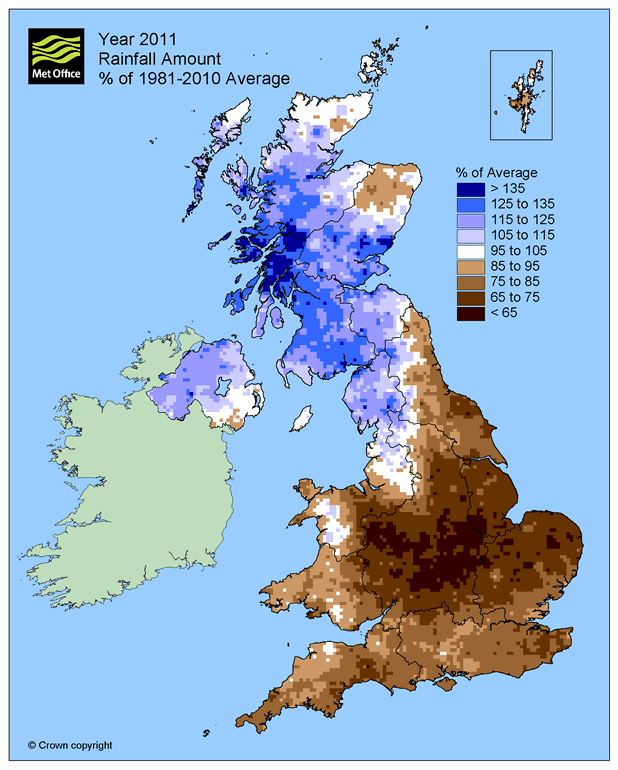
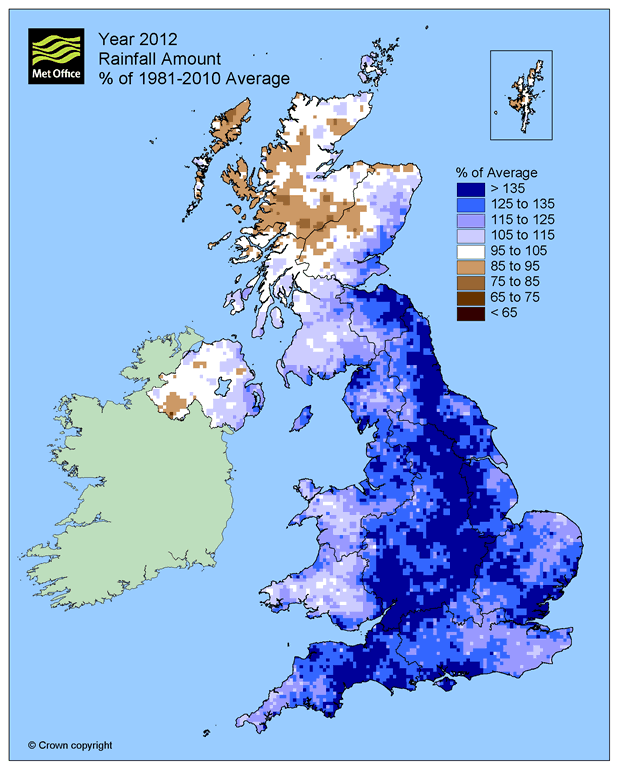
Two families of weather-induced risks
Financial institutions divide weather-induced risks into two groups: the severe non-extreme events and the natural catastrophes (NatCat). Natural catastrophe emergency state is declared by the Federal or State governments and the damages are treated with Governmental funds dedicated to National Security issues. NatCat events include earthquakes, massive regional floods, and hurricanes.
Let’s skip here the NatCat risks (already managed by National programs) and have a look at the weather-induced risks which are beyond the governmental concern. Farmers face such non-extreme risks every year: too warm winter, too cold summer, too dry spring, too wet harvest period, too early growing season, too late spring frost, and many more.
Weather forecasts and instant mobile alert systems allow to mitigate and reduce certain losses. For example, the national emergency agency or the national weather service warn about the hail, typically within less than one hour. In this case, the owners of cars have a chance to move those inside. Even though, the farmers will not be able to protect the crops, but only the cattle. Weather forecasts provide the expected timing and the likelihood estimates of expected rainfall. Yet, when the daily rain amount reaches the monthly average values, there is very little to mitigate.
Weather-induced risk quantification
Insurance policy for a weather risk or a yield loss is also called “parametric insurance” or “weather derivative”.
In order to subscribe to policy, the insurance company requests a multitude of information to be able to quantify and price the risk. These include the geographic location, size of the insured domain, the average revenue, and the description of past events and the experienced losses.
In contrast to classic insurance policies requiring the proof of the actual loss, with the parametric insurance, the compensation for loss is supported only by a meteorological parameter or index (temperature, wind speed, rainfall, frost, hail). Parametric insurance issues a fixed payment upon the occurrence of a verifiable severe weather event. The requirement: all-weather measurements should be provided by a third party – an independent company from the insurer and from the holder.
The amount of the payoff is always predefined in the policy. It is calculated based on the expected loss and the risk threshold level. The amount of the compensation is explicitly determined in the policy, such as every time that freezing occurs during the growing season, the wine producer gets a fixed payment.
The role of the parametric insurance is to compensate for those non-catastrophic excessive financial losses which can’t be afforded by the client on his own. The focus of such financial protection solution is on hourly, daily, and up to seasonal time frames, and everything that goes beyond the weather forecast reach. In general, the subscription is possible two weeks in advance.
Parametric insurance formulation
For agricultural production, the weather-induced risks span hourly, daily, and seasonal time scales. Obviously, frost policy requires very accurate and frequent temperature measurements, where 0.9 deg C and 1.1 deg C make a big difference. Drought policy could be based on weekly and monthly cumulative rainfall records. It is explicitly written in every insurance policy: which weather station is used as a reference, which meteorological parameter and instrument accuracy. In regions where observational rainfall data is rare or missing, with few weather stations, satellite (CHIRPS) and numerical weather analysis (ERA-5) successfully replace the observations. Again, weather data provider is always defined in the policy.
The most popular weather-index contracts are those based on cumulative seasonal anomalies in air temperature. These indices are called “cumulative heating degree days” (HDD) and “cumulative cooling degree days” (CDD). These policies are traded mostly by energy utilities rather than farmers. For example, a natural gas utility contracts to receive 10,000 USD for every degree day less than 5000 (cumulative over winter months), with a limit on a payout of 10 M USD.
Hail policy is quite a new product in development. It happened that insurance companies accumulated the best record about hail occurrence, even more, detailed than meteorological observations. This is because on every hail occurrence there are claims. Standardized hail policy could be provided soon in regions with both: good weather radar coverage and high-resolution numerical weather models of 1-2 km.
Limitations of the Parametric weather insurance
Standardized pre-defined payment amounts can be automated and don’t require posterior property loss assessment. The drawback is that the index-based insurance suffers from “basis risk”, which is the difference between the payment received by insurance contract holders and the actual losses they suffer. As a result, contract holders may receive a payment in the absence of losses or receive nothing even in the presence of large losses. For example, hail and frost do not impact evenly the area to which the policy applies. Terrain orientation (North-South) and altitude differences reduce and amplify the peril.
Another limitation is that index insurance typically covers only one type of risk, whereas producers may be exposed to many, such as a price risk or supply chain risk. For example, insurance would only cover the value of the grapes lost, not the full amount of the bottle of wine.
When to buy?
Recent shock call for action. Exactly as it now with the COVID epidemics when huge funds are invested now into the medical industry. Same with the insurance market. The subscription rate for weather insurance is always the highest just right after a natural hazard. Yet, to remind, the parametric insurance is about the natural fluctuations of weather around some normal (average) state. In the absence of major external environmental factors, such as the Climate Change or the underground water shortage (due to overexploitation or dam construction), the probability of getting the same exceptional weather anomaly several years in a row is statistically low.
This statistical vision of weather risk does not concern frost events. Observations of all types confirm that on average, the growing season starts earlier everywhere. The bad news: there is no reason that frost events should shift to earlier dates as well. During the polar night, the polar air masses cool down in the Arctic. It is a vast area of the size of China. The mixing of these polar air masses into lower latitudes (cold air outbreaks) causes frost. Together with an early growing season, when plants are in a more advanced vegetation phase, the frost causes more damage. In France, the subscription for frost policy is typically restrained to 28 February, before the growing season starts.
Droughts and local floods become more and more frequent in certain areas. Surveys among farmers reveal that at least a third of farmers worry the most about these two weather risks. As the growing season starts, the cumulative lack of precipitation is clearly detectable with the satellite data. NDVI and FCover vegetation indices developed for satellite data are not universal solutions for all types of vegetation. Still, weekly time records of these vegetation indices are very efficient for monitoring of non-irrigated 1×1 km parcels further away inland. As for frost, subscription for seasonal drought is possible prior to the growing season, before the evidence of any ongoing tendency.


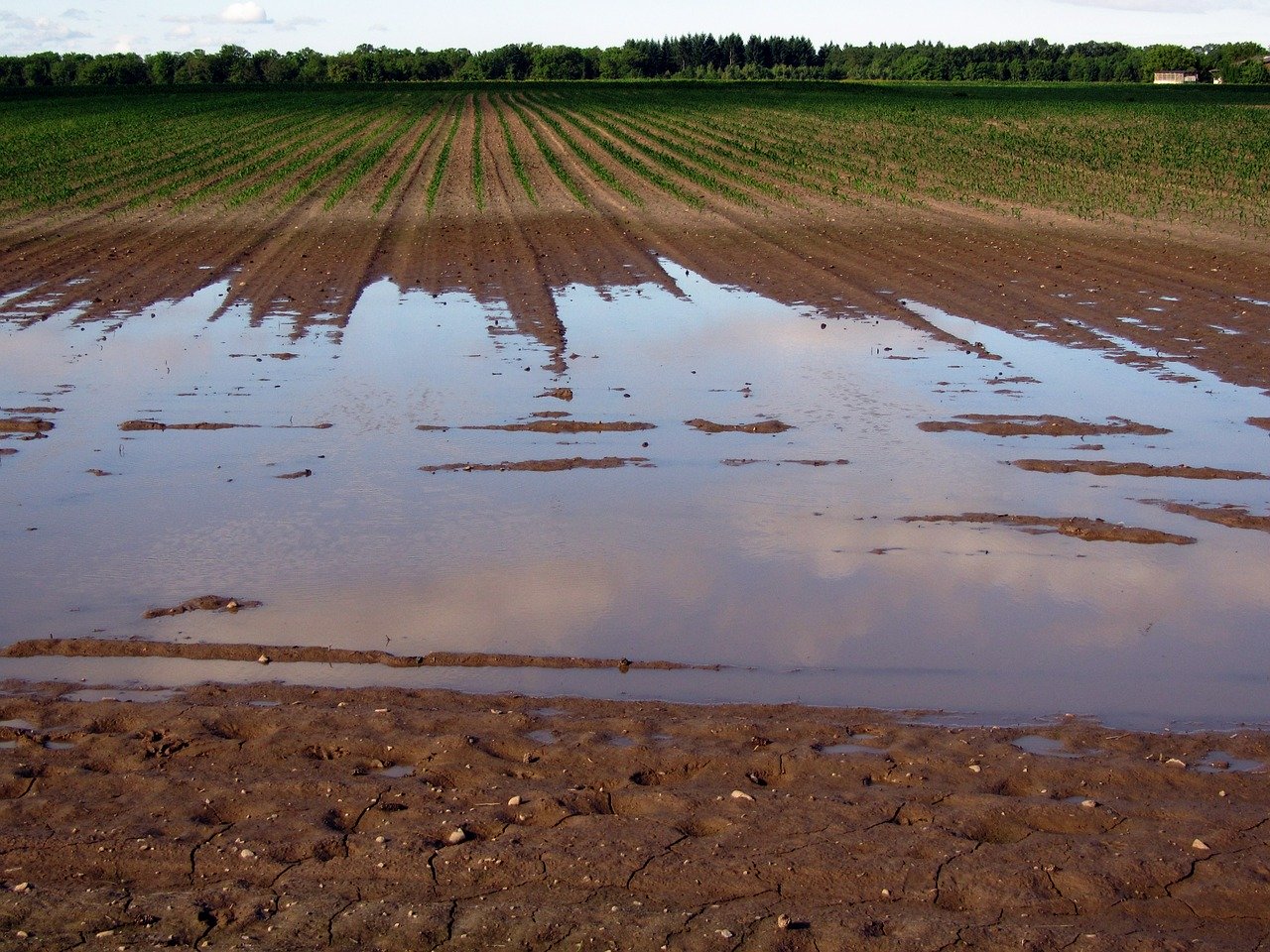
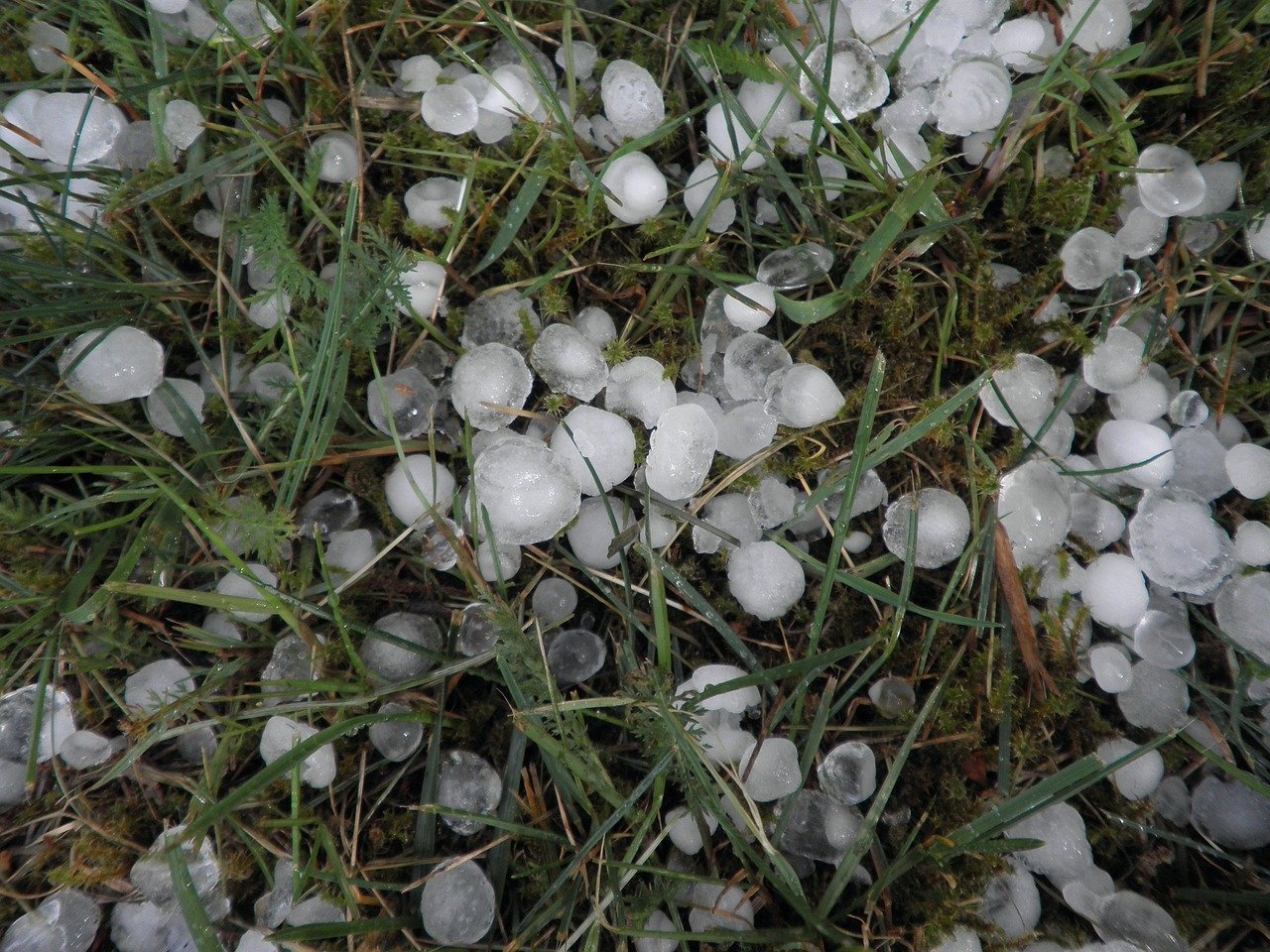
Cost of weather insurance policies
Making actual decisions requires the information about the costs of various policies. Depending on the expected loss and the risk threshold level, the cost of the parametric insurance policy (premium) would be in the range of 5-25% of the payout limit Maximum payout corresponds to the worst case possible.
Obviously, the premium is high for the insurance covering frequent events with a high chance to happen over a vast exposure area. Standardized and frequently traded contracts are cheaper: 5-10% of the payout limit. When comparing various policies, the first question to clarify is whether the policy should cover only the production costs or the revenue losses also?
Many countries offer governmental subsidies to support farmers with a selection of weather risk insurance. For example, for corn producers in China and Mexico. Subsidies are an effective mechanism to improve the resilience of the agricultural sector facing severe weather. Through national programs the cost of the policy becomes more affordable for farmers. For the Multi-Peril Yield Insurance in India and China, farmers pay only about 20% of the premium. Thus if the premium is 10% of the maximum payout, let’s say it is 1OO K USD (which is the compensation in the worst case), then the farmer pays only 2 k USD for the policy. Farmers in Brazil pay around 60% of the premiums. In Mexico, certain crop insurances are entirely subsidized by the federal and state authorities. Subsidies are tied to specific crops and apply limitations to the farm size and the maximum payout.
Multiple initiatives are conducted on the state level in the area of weather-induced risks. In July 2019 the UK Prudential Regulation Authority (PRA), the UK Financial Conduct Authority, the UK Financial Reporting Council, and the UK Pensions Regulator issued a joint statement on climate change. Financial risks due to Climate Change and severe weather events are recognized and programs launched to assess the vulnerability of assets. Recurrent risks reduce incentives to invest, stagnate economic activity. Droughts and floods paralyze the production – distribution – supply chain.
In order to efficiently coordinate and regulate the content, formulations, and cost of the parametric weather policies, National Authorities should assume the following :
- allow for easy access to all available weather data, both real-time and historical records, radar and numerical models (which is not the case in France, for example);
- centralize weather data storage;
- certify weather data sources;
- create a reference weather risk resource in collaboration with all insurance companies and public research institutions;
- provide an indicative gridded record of risk thresholds for the most common weather anomalies like the heat stress, frost, drought and rainfall;
- allow for fast technical innovation through competition;
- encourage the design and integration of new insurance policies to fill the protection gap.
These steps all together would reduce the cost of the insurance by at least a factor of two or even more. And as we said in the beginning: to protect life and property, the best efficiency could be achieved with a combination of the risk exposure evaluation, prevention measures, emergency alert, and insurance compensation when a crisis occurs. All these steps require symmetric information on the weather-induced risk. Weather insurance is a financial instrument and it should be used to facilitate and accelerate recovery and reconstruction after weather shocks.💡
You can follow Elena Maksimovich and her work via LinkedIn. If you wish to lend your thoughts and expertise to this opinion piece, becoming a member yourself can help you make connections and facilitate collaboration.
Disclaimer: This post represents the views of the author and do not necessarily reflect the view of WEMC or any other agency, organization, employer or company.
WEMC Member Guest Blogs & Contributions:
- Weather insurance for farmers: what is it and when to buy? (May 2020) – Elena Maksimovich, Data Analyst & Marine Scientist, Weather Trade Net LLC
- Climate services for a renewable future in West Africa (December 2019) – Sebastian Sterl, Researcher on Energy & Climate, Free University of Brussels (VUB)
- How hydrological cycles impact the worldwide energy industry (November 2019) – Vasilis Pappas, Senior Meteorologist, Trianel GmbH
- Should every company be considered an ‘energy company’? (October 2019) – Michael Ferrari, Managing Partner & Principal of Atlas Research Innovations
- The Climate Pocketbook: An example of educational outreach from experts (August 2019) – Sebastian Sterl, Researcher on Energy & Climate, Free University of Brussels (VUB)
- Malawi-UK Teacher Partnership Focuses on Clean, Affordable Energy (August 2019) – Noel Banda, Meteorologist & Climate specialist, Malawi Department of Climate Change and Meteorological Services
- Global Wind Atlas wind resource maps now available for every country (January 2019) – Oliver Knight, Senior Energy Specialist, The World Bank
- Prescient Weather’s World Climate Service launches “significant upgrade” (December 2018) – Jan Dutton, CEO, Prescient Weather




